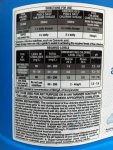Unfortunately, the recommendations that come with pool equipment are not adequate for keeping a pool open and consistently clean. FC at a minimum of 7.5% of CYA is only very, very gradually getting recognized, despite it being 45 year-old science. Equipment manufacturers just parrot the typical pool industry numbers.
When a pool is stabilised, roughly 95% of the chlorine is tied up with CYA, and not active. The other 5% is the active chlorine, including hypochlorous acid (HOCl) which is the active sanitiser and sometimes called the "harsh" part of the chlorine. Drinking water here in Sydney is around 0.7 ppm FC (never any CYA of course), and the HOCl is 0.22 ppm. In a pool with FC at 7 ppm and CYA at 70 ppm, there is 0.04 ppm HOCl (about 1/5 as "harsh" as the drinking water). (both compared at pH 7.8)
You need roughly 0.02 ppm HOCl to prevent algae from gaining a foothold, and around 0.01 ppm HOCl to control target pathogens. Most of the pool industry merely says to keep CYA under 100 ppm and FC at 1-3 ppm. Those conditions are dead wrong and ineffective, because the HOCl level is 0.003 ppm at 1 ppm FC and 100 ppm CYA, which is why people end up having to "shock" weekly. The pool chemical and general pool industry appears to be reluctant to share the correct information, probably because it would hurt overall chemical and other sales.
Luckily for us here in Aus, we're in front. A good source is a chlorinating liquid label (see below). Pool chems here are regulated by the Australian Pesticide and Veterinary Medicine Authority (APVMA), and label information needs to be supported by science. CYA is recommended to be kept from 30-50 ppm, and the label refers only to
minimum chlorine levels (2-3 depending on temperature), plus there are higher recommended levels for clearing algae. There's a few things that could be better on the label, but at least with respect to FC-CYA, the numbers are reasonably compatible with TFPC recommendations.



